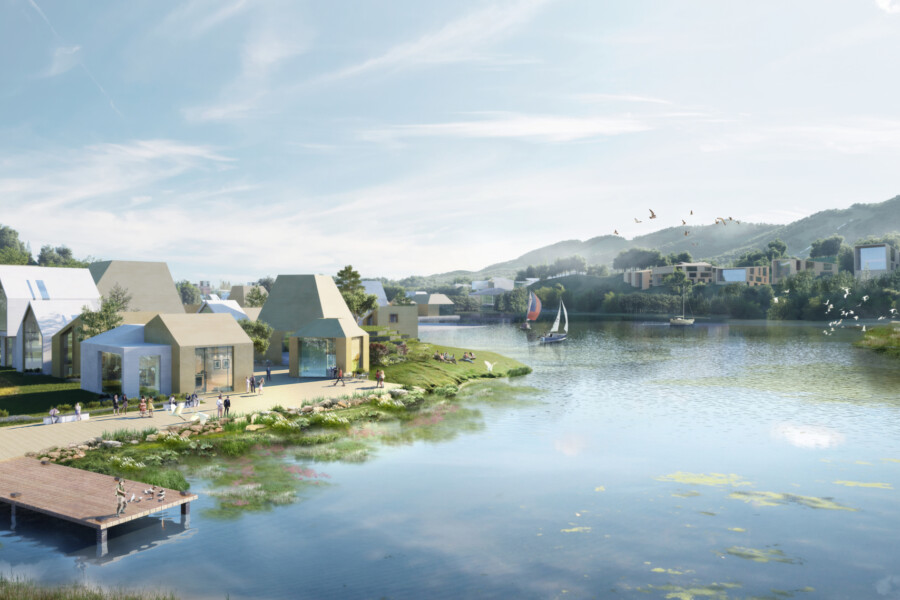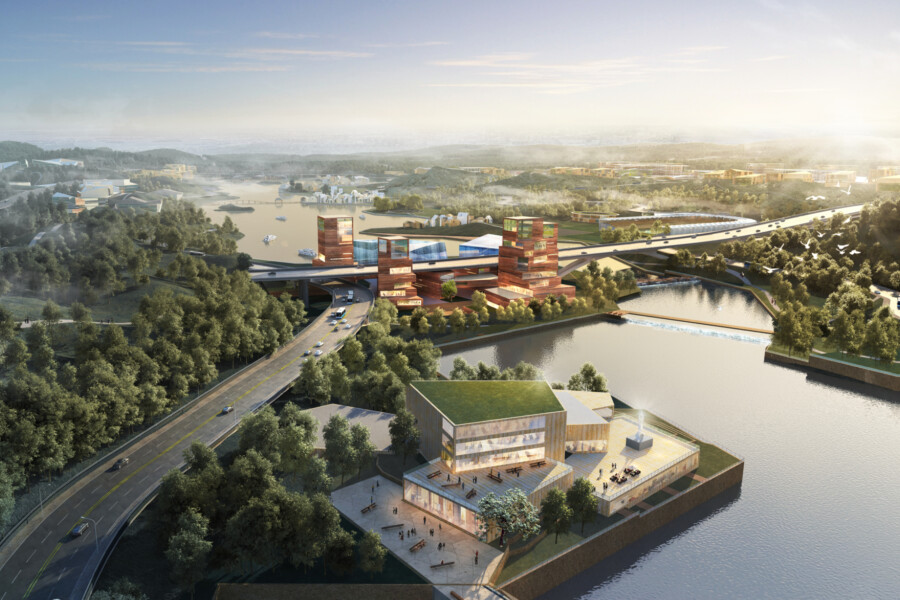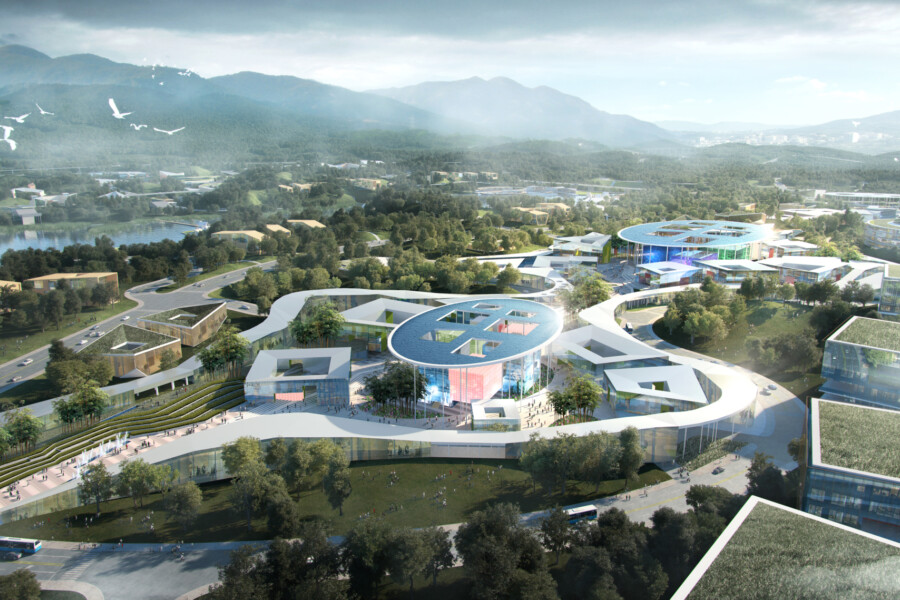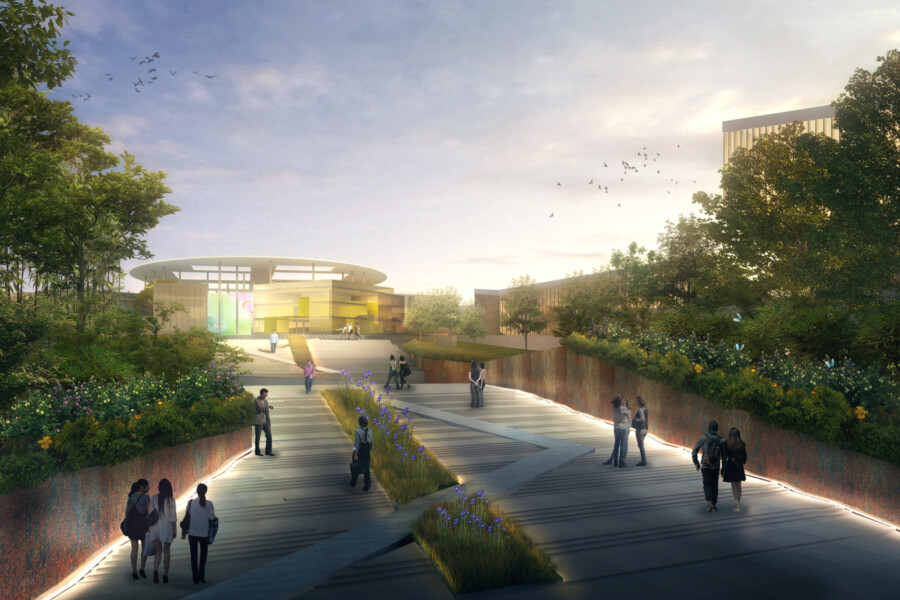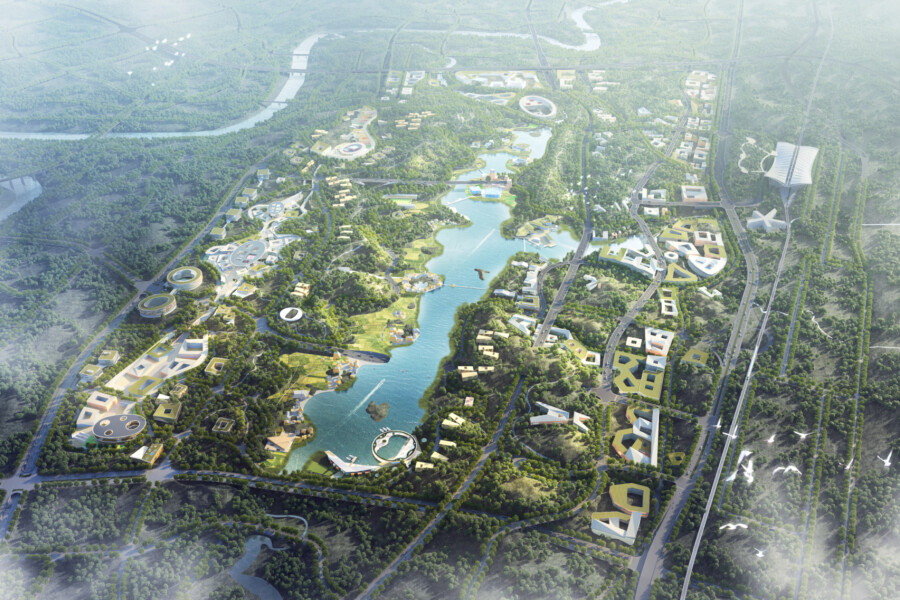
Chapman Taylor wins 6.8km² Chongqing Liangjiang design competition
Chapman Taylor has won a major international design competition to create an urban innovation zone on a 6.8 square kilometre site in Chongqing Liangjiang, central China.
Liangjiang has been chosen by the Chinese government as a developmental ‘new area’ for Chongqing, which has a population of over 30 million people and is one of China’s four centrally governed municipalities.
The masterplan competition sought designs for an advanced technology research and development district, with well-known names such as Zaha Hadid Architects and Callison RTKL taking part.
Chapman Taylor’s winning project is based on the integration of the beautiful natural environment with the technology facilities, and creates a connected series of five university campuses surrounded by R&D clusters.
The organic form of the campuses follows the undulating contours of the existing site, producing a dynamic combination of urban spaces.
The valley formed by the hills to the east and west perimeter of the site is to become a lake. At the northern end will be a national laboratory and the ‘Centre of Ideas’, a place which is the collaborative heart of the masterplan.
The south of the lake is surrounded by beautiful landscape interspersed with social, sports and cultural villages, which are a contemporary interpretation of the traditional villages of the region.
The masterplan is a fully transit-orientated development and provides railway, metro, BRT, electric bus and water taxi connections throughout the site.
Sustainability is embedded in the project, which is planned to be self-sufficient in energy needs – using solar, biomass and hydroelectric power sources, resulting in a saving of over 450,000 tons of CO² per annum.
This new innovation community is designed to have a unique sense of place in its hillside setting. It is founded on creating the ideal environment for open interaction and connections between the extensive number of advanced technology components to nurture learning, creation and innovation.
